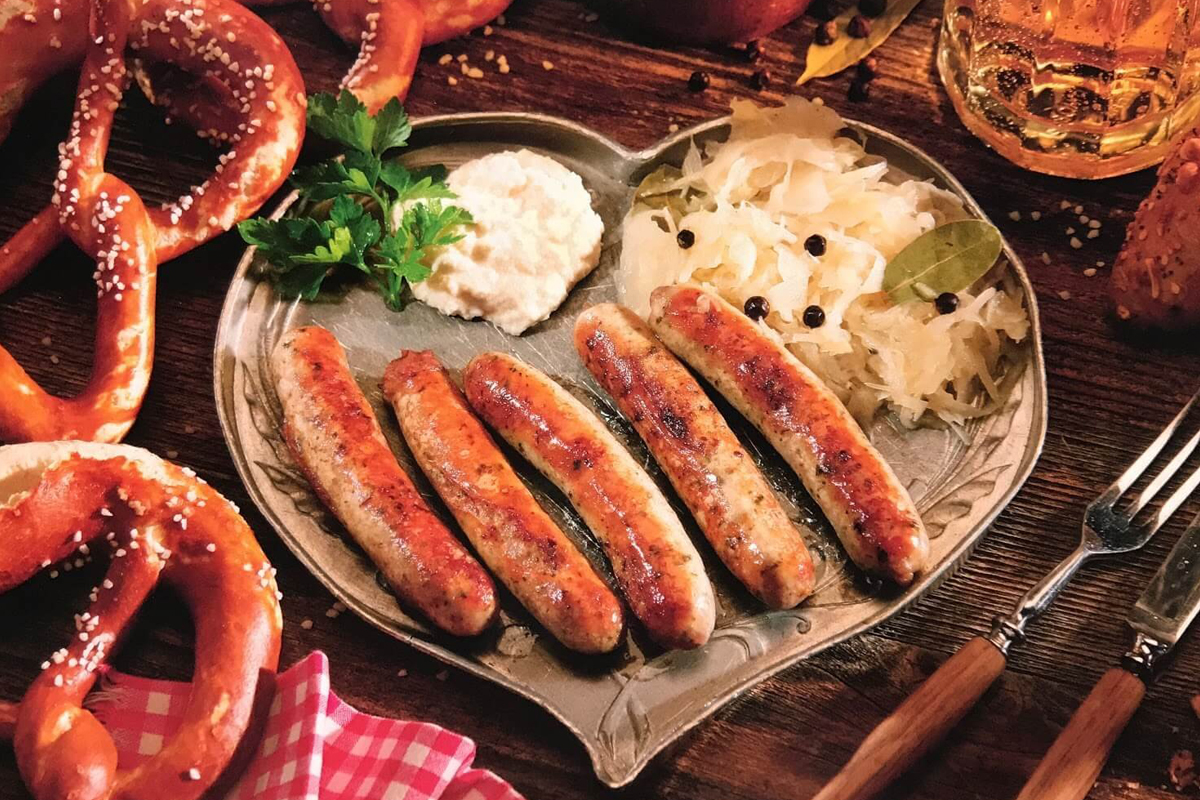German cuisine is renowned for its heartiness, diversity, and rich history. Over the centuries, it has evolved under the influence of neighboring cultures and regional characteristics, and today it represents an interesting combination of old traditions and modern culinary trends. Let’s take a look at traditional German dishes as well as their modern interpretations.
Traditional Dishes: Hearty and Simple
German cuisine has always been known for its hearty, calorie-dense dishes, historically prepared to provide energy throughout the day.
Pork Knuckle
One of the most famous dishes is Schweinshaxe – roasted pork knuckle traditionally served with sauerkraut and potato dumplings. This dish is especially popular in Bavaria and symbolizes German cuisine for many tourists.
German Sausages
Another classic example is Bratwurst – German sausages grilled or fried and served with mustard and sauerkraut. Bratwurst has many regional variations, differing in spices and meat fillings. For example, in Thuringia, they make thinner and longer sausages with marjoram, while in Nuremberg, they are small and spicy.
Hearty Stew
German soups and stews also play an important role in the cuisine. Eintopf, literally translating to “everything in one pot,” is a hearty stew that includes meat, potatoes, vegetables, and in some regions, legumes. It was especially popular in rural areas, where this cooking method saved time and resources.
Modern Interpretations: Lightness and Elegance
Modern German chefs strive to preserve traditions but also introduce fresh ideas by reducing calories and adding new ingredients.
Modern Pork Knuckle
One example is the modern interpretation of Schweinshaxe. Today, this dish can be found in fine dining restaurants, where the pork knuckle is not simply roasted but slowly baked at low temperatures to retain the meat’s juiciness.
New-Style Sausages
Modern interpretations of German sausages are also becoming popular. Bratwurst is now often made from various types of meat, including turkey or venison, reducing the dish’s fat content. Vegetarian versions of German sausages made from plant-based ingredients like soy or pea protein are also gaining popularity.
New Pretzel Forms
Pretzels have also taken on new forms. Traditional salty Bavarian pretzels are often filled with various ingredients such as cheese, spinach, and even sweet fillings.
Regional Dishes and Culinary Diversity
German cuisine is unique in that each federal state has its own culinary traditions.
Veal Sausage
In Bavaria, for example, one of the most famous dishes is Weißwurst – a white veal sausage traditionally served for breakfast with plain pretzels and sweet mustard.
Pickled Herring
In northern Germany, fish dishes are popular. For example, Matjes – pickled herring fillets, served with onions, apples, and sour cream.
Marinated Meat
In the western part of Germany, in the Rhineland-Palatinate region, dishes using local wine are popular. Sauerbraten is meat marinated in wine.
Today, German cuisine combines traditions with modern approaches.


